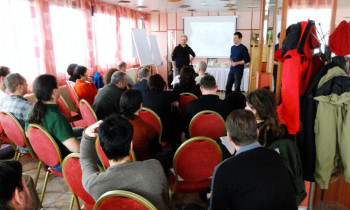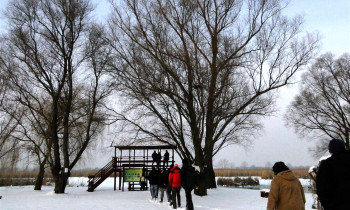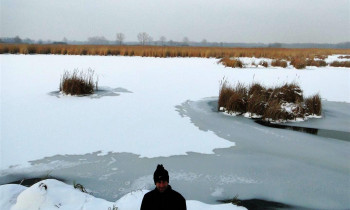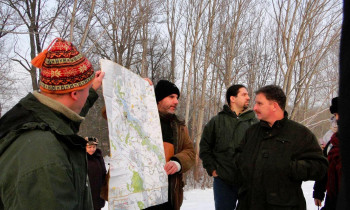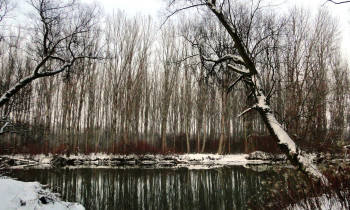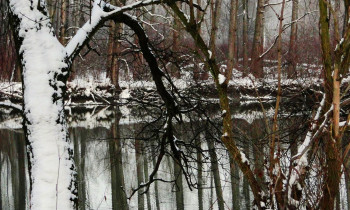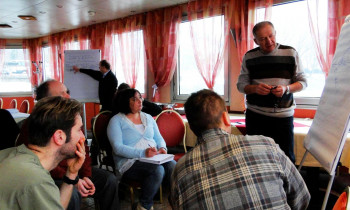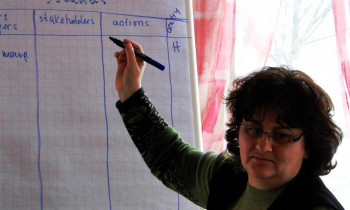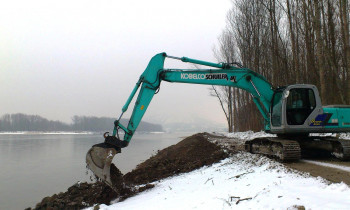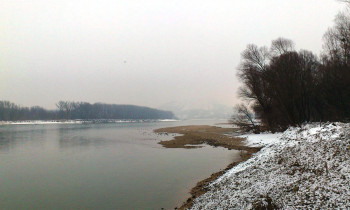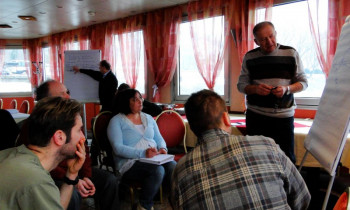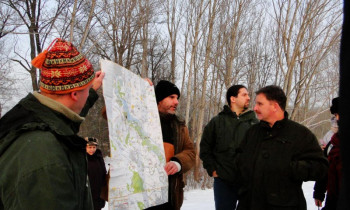Sediment balance, islands as stepping stones and dynamic river habitats, restoration actions by Protected Areas and monitoring to assess river dynamics - all of these are important topics for river morphology, and all of them were discussed in the first trilateral meeting of the DANUBEPARKS STEP 2.0 project. Before the actual workshop, the project managers had one day training on presentations, with topics such as body language, voice, powerpoint, etc.
Monitoring and restoration for river dynamics
Following this, two presentations on river restoration and engineering projects were the initiators for a short, but fruitful and intensive discussion: Ivan Mitrovic from the waterway authority in Vojvodina (Serbia) - Plovput - presented their approach on river engineering projects with integration of environmental concerns and stakeholder participation. Akos Gaborik from Duna-Dráva National Park presented a planned restoration project along the Dráva River, one of the main tributaries of the Danube.
Sediments and islands
The second topic of this day was the conservation of intact morphological processes. Danube Islands develop only due to natural dynamic processes in a river, and provide valuable and rare habitats to a broad diversity of species. Therefore, they have been selected as flagship areas to conserve. A concept for this was developed by Georg Frank from Donau-Auen National Park and Stela Bozhinova from Persina Nature Park - the Belene island that is protected by Persina is the biggest Danube island in the whole Bulgarian Danube section. The discussion, again structured in a world café, collected the perspectives of all partners regarding the Danube islands protection and three questions: What was the general feedback? Who are the stakeholders and landowners of these islands? What could be the advantages of focusing on the islands of the Danube River?
Study visits & experience exchange
The second excursion gave an impression of the restoration project “Naturversuch Bad Deutsch-Altenburg”, which is currently being implemented in the Donau-Auen National Park in Austria. Known restoration measures such as river bank restoration, sidearm reconnection, and groyne restructuring are implemented and tested in their interplay together with one innovative method against the negative effects of significantly reduced sediment transport, especially bedload, in the river: The granulometric soil stabilization adds gravel of slightly bigger size to the river bed to raise the low water levels sustainably, thus ensuring the continuous connection of the main river with the adjacent floodplain.
All in all, the two days of intensive work and many new impressions and inputs were a perfect basis for our joint work on the Action Plan River Morphology, that will be produced within the DANUBEPARKS STEP 2.0 project and will deal with conservation, restoration, and sediment management measure.
